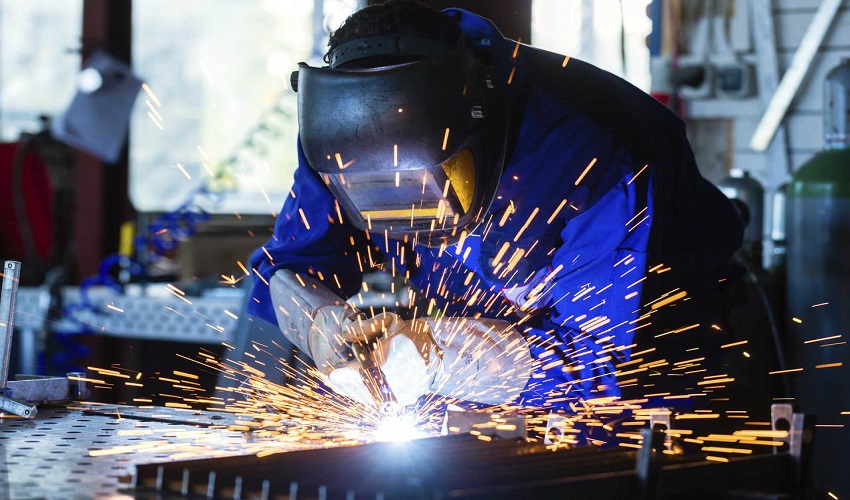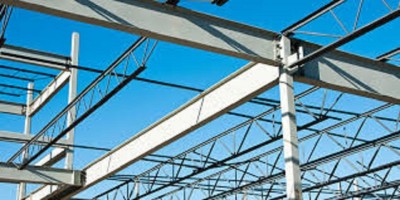Why Alpha Reo Is the Top Selection for Steel Reinforcement
Why Alpha Reo Is the Top Selection for Steel Reinforcement
Blog Article
Cutting-edge Trends in Steel Construction: Enhancing Sturdiness and Precision
In the realm of steel manufacture, the search of resilience and accuracy has actually caused a wave of ingenious trends that are improving the market. From improvements in welding technologies to the combination of robotic automation in fabrication procedures, the landscape of steel manufacturing is progressing rapidly. High-strength alloy growth, coupled with the utilization of 3D modeling and simulation software program, is pressing the boundaries of what is attainable in terms of architectural honesty and accuracy. The growing focus on sustainable methods in steel production is not just driving effectiveness however likewise promoting a much more environmentally conscious approach to manufacture. These trends are not simply forming today but also preparing for the future of steel fabrication, assuring more enhancements in toughness and precision.
Advanced Welding Technologies
In the world of steel construction, the fostering of advanced welding modern technologies has actually considerably changed the sector's approach to accomplishing remarkable high quality and precision in structural welds. Advanced welding technologies, such as laser beam welding and friction mix welding, have actually emerged as game-changers in the field. By leveraging these innovative welding techniques, steel makers can boost the toughness, toughness, and accuracy of their structural welds, meeting the increasingly demanding requirements of modern building jobs.
Robot Automation in Manufacture
Accepting robot automation has actually become a foundation of modern-day steel construction practices, improving processes and boosting performance throughout the sector. Robotics are reinventing the way steel components are made, supplying unrivaled accuracy and rate while decreasing human error. These automated systems can deal with repeated jobs with regular precision, bring about better final product.
One secret advantage of robotic automation in steel construction is the capacity to work all the time without fatigue, substantially boosting manufacturing result. This continuous operation decreases downtime and increases job timelines, ultimately saving expenses for producers. Furthermore, robots can be set to execute detailed tasks that might be unsafe or tough for human workers, enhancing safety and security in the work environment.
Moreover, robot automation allows smooth assimilation with other electronic technologies, such as computer-aided layout (CAD) software and Net of Points (IoT) systems (steel fabrication melbourne). This interconnected strategy boosts interaction in between different stages of manufacture, maximizing operations and guaranteeing real-time monitoring and control. As the steel fabrication sector proceeds to progress, robot automation sticks out as a transformative pressure driving effectiveness and accuracy in manufacturing procedures

High-Strength Alloy Growth
The improvement of high-strength alloy growth in steel manufacture is reshaping the sector's technique to improving material longevity and efficiency. High-strength alloys are engineered to display remarkable mechanical residential properties, such as increased tensile strength, strength, and corrosion resistance compared to standard steel grades. By integrating these sophisticated alloys Full Article right into construction procedures, makers can produce elements that hold up against higher tension levels and rough settings, causing even more trustworthy and sturdy final result.
One trick benefit of high-strength alloy development is the capability to lower product thickness without endangering architectural stability. This not only results in lighter-weight parts yet also contributes to cost financial savings and improved performance in fabrication and setting up processes. The boosted strength-to-weight ratio of these alloys enables for the style and building and construction of structures with greater load-bearing abilities while lessening total weight.
3D Modeling and Simulation Software Application
Innovations in steel fabrication procedures have actually been significantly thrust by the assimilation of sophisticated 3D modeling and simulation software program devices. These tools permit fabricators to create comprehensive digital versions of their jobs, enabling them to visualize the last item with accuracy before any physical job begins.

Sustainable Practices in Steel Manufacturing
Integrating lasting methods right into steel manufacturing procedures is essential for lessening ecological effect and guaranteeing long-lasting source schedule. One crucial sustainable practice is the adoption of energy-efficient innovations to reduce greenhouse gas emissions throughout the steel manufacturing procedure. This includes utilizing sustainable power sources, such as solar or wind power, to power steel plants and carrying out energy-efficient equipment to steel fixing enhance energy use.
An additional critical facet of sustainable steel production is the responsible sourcing of basic materials. This entails making certain that the iron ore and other sources made use of in steelmaking are acquired from honest and environmentally pleasant resources. By advertising openness in the supply chain and sticking to strict ecological criteria, steel makers can lessen the adverse influences of source extraction on neighborhood communities and areas.

Final Thought
Finally, the innovative trends in steel manufacture such as advanced welding innovations, robotic automation, high-strength alloy development, 3D modeling and simulation software application, and sustainable practices are boosting the resilience and accuracy of steel items. These developments are reinventing the steel fabrication industry by enhancing efficiency, high quality, and sustainability. It is clear that the future of steel construction lies in welcoming these cutting-edge innovations to satisfy the demands of modern building and manufacturing sectors.
In the realm of steel fabrication, the search of toughness and precision has led to a wave of cutting-edge fads that are improving the market.In the world of steel fabrication, the adoption of cutting-edge welding technologies has actually substantially changed the market's strategy to attaining remarkable high quality and accuracy in structural welds. As the steel manufacture sector proceeds to advance, robotic automation stands out as a transformative force driving effectiveness and accuracy in making procedures.
Moreover, reusing and reusing steel scrap and waste materials play a significant duty in boosting the sustainability of steel manufacturing. metal fabrication melbourne.In final thought, the cutting-edge fads in steel construction such as advanced welding innovations, robotic automation, high-strength alloy development, 3D modeling and simulation software program, and sustainable practices are improving the resilience and precision of steel products
Report this page